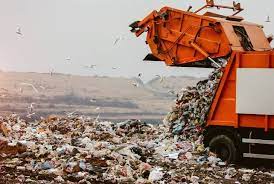IWM and Local Economies: There are several ways to describe integrated waste management and its benefits. Perhaps the best way for our purposes is to look at the effect of solid waste on the economy and environment of a community. The job creation and economic potential of IWM stem from the following:
The economic value of recovered materials as re-usable products (either “as is,” or through refurbishment) or as raw materials.
The opportunity for simpler, more decentralized sometimes more labor-intensive solid waste management solutions which can create jobs in rural communities.
Such decentralized solutions often work better in more sparsely-populated, rural communities because they do not depend upon high population densities to achieve economies of scale (e.g., centralized solutions may be expensive in rural areas because of the long transport distances required to serve relatively few people.
Read Also : Concept Integrated Waste Management (IWM)
Community or backyard composting of yard, food, and other organic waste is often better suited to rural areas because it saves transportation of these heavy waste stream components over relatively longer distances than in urban areas).
Opportunities to intentionally create and recruit businesses and industries which use the waste streams of existing business as feed stocks.
Such arrangements can help to plug economic “leaks” from our rural communities. Such methods can be integrated into the strategies of local business development specialists, industrial recruiters, and existing industry managers.

The short-term and long-term economic value to rural communities of avoided land filling.
Benefits of this include:
Deferring expensive landfill sitting processes
Reducing annual operation and maintenance costs for existing landfills
Reducing transportation costs to the community and
Reducing the rate at which successive cells of expensive new subtitle D landfills must be developed and lined.
Community resources saved at the landfill can be diverted into economic development efforts.
Read Also : Integrated Waste Management (IWM): The Case of the Corrugated Box
The traditional economic model views economic activity – and its benefits – as the extraction of raw materials, their manufacture or processing, the sale of the product or commodity, and then its use by consumers.
The rest of the life cycle of the raw materials and energy consists of disposal at some cost, and control of the associated pollutants. In other words, once a product, by-product or material becomes classified as a “waste,” it has not only zero value but a negative value, i.e., the cost to local government of “disposal,” pollution control, and the health cost to society of any pollutants not successfully controlled.

